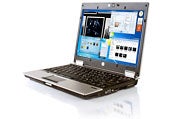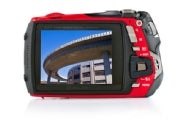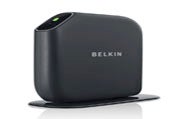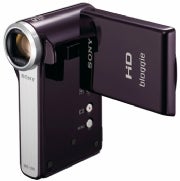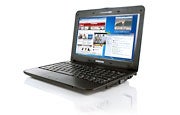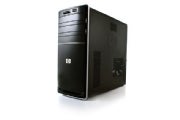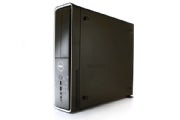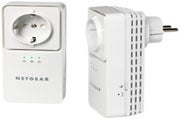Overdrive Review, by Ken Biba May 4, 2010

If you're like me, you need to be connected to the Internet constantly, on multiple devices, and at the highest speeds possible. Wi-Fi is great for connecting from places like home, work, and local coffee spots. But when I'm on the road, finding usable Wi-Fi hotspots for connecting my wireless devices is a challenge, and I often use (or wish I could use) cellular data service instead.
Sprint’s
Overdrive 3G/4G mobile hotspot device (made by
Sierra Wireless) connects to Sprint’s cellular network and then forms a miniature Wi-Fi zone for other devices to connect to. The battery-powered Overdrive looks like an unusually thick coffee coaster; it fits easily in your shirt pocket and can share your cellular data connection with up to five Wi-Fi-capable devices.
Unlike the others, the Overdrive is capable of supercharging its mobile hotspot with 4G WiMax--which claims to offer a tenfold increase in performance over 3G. When the Overdrive can't connect with a 4G network, it automatically reverts to Sprint’s 3G or 2G service, depending on what's available.
Sprint (through its partner Clearwire) has deployed 4G WiMax in 28 cities and will offer the service in at least 56 cities by the end of 2010.
I traveled with an Overdrive through several of Sprint’s 4G and 3G cities, along with a couple of laptops and a gaggle of smart devices--an iPhone 3GS, an iPad, a Motorola Droid, and an HTC Hero. I often stowed the Overdrive conveniently in my coat pocket or in my backpack, and let it work its magic from there.
If you can configure your home Wi-Fi router, you'll find that the Overdrive is a snap to set up by comparison. A simple yet comprehensive browser interface guides you through configuration and setup.
An external LCD on the Overdrive delivers key status messages. If you like, you can make it display your Wi-Fi password. (I tend to forget mine, so I value the quick reminder.)
Unfortunately, the device’s single power/control button was sometimes slow to respond in my hands-on testing, leading to uncertainty as to whether it was responding at all. Another drawback: The Overdrive took a full minute to boot up.
The device comes equipped with GPS to display the unit’s position in Google Maps, and with a microSD card that enables you to share files between Wi-Fi-attached devices. Ultimately, though, the microSD storage isn't as convenient as using a simple USB memory stick to move files.
During my tests in Sprint 4G cities, the Overdrive remained in 4G mode about 80 percent of the time. When I used the Overdrive to connect my laptop near the city centers of Washington, D.C., and Baltimore, I saw download speeds of around 3.2 megabits per second, and upload speeds of 400 kilobits per second.
Sprint promises peak 4G download speeds of up to 10 mbps, with average speeds in the range of 3 mbps to 6 mbps. In Novarum’s 13-city wireless broadband performance tests conducted in January 2010, Sprint’s 4G network delivered average download speeds of between 2 mbps and 4 mbps, with occasional higher bursts.
In my tests with the Overdrive, I set the device to switch automatically between 4G and 3G service, with a preference for 4G (the default setting). Moving to 3G from 4G was quick and seamless; but the unit needs between 30 and 60 seconds to jump from 3G service to 4G service.
When the device was stationary, the 3G-to-4G shift didn't pose any special problems (aside from the time); but once when it was in motion aboard the Acela train from Washington, D.C., passing through Baltimore (a Sprint 4G city), the Overdrive couldn't seem to decide between the two wireless modes (possibly because of the speed of the train and changing cell zones) and communications ceased. Only when we passed out of Baltimore’s 4G footprint did the Overdrive settle on 3G service and restore communications.
The Overdrive's performance with my smartphones and iPad was very different from its performance with my laptop. 4G download speeds on the iPhone, iPad, Droid, and Hero were substantially worse than the corresponding speeds on my Overdrive-connected laptop.
In fact, in my tests, the IPhone and iPad registered faster speeds when connected via their internal 3G radios over AT&T’s much-improved 3G network than when connected via the Overdrive to Sprint's 4G network. So using the Overdrive rather than the internal 3G radio to connect those devices seems pointless. (I should note, though, that the latest Overdrive firmware update substantially improved iPhone’s performance over the hotspot.)
For the Droid and the Hero (which normally connect over Verizon's and T-Mobile's somewhat slower 3G networks), the Overdrive boosted performance by about 50 percent. Whether that improvement justifies buying the extra Sprint contract is debatable, and depends entirely on the customer.
In 3G-only cities, performance for all devices drops to Sprint’s reliable but somewhat leisurely 3G speeds, which our 13-city speed tests showed to be marginally slower than Verizon’s and markedly slower than AT&T’s.
Like other mobile hotspot devices, the Overdrive has its own battery, which you can recharge via miniUSB connected either to a PC or to a power outlet using a plug-in adapter. As a traveler I like to keep the number of chargers I carry to a minimum, so I prefer to recharge the Overdrive from my laptop.
The Overdrive seems to use more power when connecting to 4G than it does when connected to 3G. The device's battery life was about 4 hours on 3G and about 3 hours on 4G. Recharging it from a fully discharged state took between 2 and 3 hours using the USB cable, but less than an hour using the plug-in adapter.
The unit has a list price of $350, but Sprint’s current rebates bring the upfront net cost to $99 when tied to a two-year contract with unlimited 4G data but with a 5GB-per-month cap on 3G data for $60 per month. These prices are the same as for single laptop USB network adapters, but at least you can share the bandwidth among several devices.
For power laptop users, the Overdrive is a godsend. In 4G cities, it delivers substantially higher performance (often two or three times higher) than that generally available from hotel or coffee shop Wi-Fi. And for frequent travelers, offsetting hotel Wi-Fi charges easily justifies the cost of the Sprint contract. The Overdrive has a spot in my travel bag for precisely these reasons.
from www.pcworld.com
Read More......
 The best of the Droids on Verizon, the Droid Incredible ($200 with a two-year contract from Verizon) impresses with its speedy user interface, gorgeous AMOLED display and fun Sense user interface. Other than some minor design qualms, this smartphone truly lives up to its name.
The best of the Droids on Verizon, the Droid Incredible ($200 with a two-year contract from Verizon) impresses with its speedy user interface, gorgeous AMOLED display and fun Sense user interface. Other than some minor design qualms, this smartphone truly lives up to its name.
